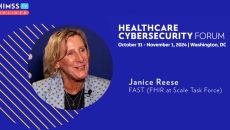Patient Access
Janice Reese, program manager of FAST (FHIR at Scale Task Force), says making patient access simpler is a key benefit, along with identity consent and security.
It will feature a 24/7 command centre, integrating the ICUs of small and medium hospitals.
The court battle with Particle Health highlights how national health information exchange networks rely on a chain of trust that can be broken, jeopardizing patient privacy under HIPAA.
The hospital, primarily based on virtual care, will be built by an Australian company.
Dr Chien-Tzung Chen, superintendent of Linkou Chang Gung Memorial Hospital in Taiwan, wants to establish a remote system to monitor patients at home using wearable devices.
The bipartisan continuing resolution announced on Monday offers "big wins" for virtual care, and the American Telemedicine Association and other healthcare groups are pleased.
Conversations have only started in the past few years about what digital equity is and how it applies to telemedicine and virtual care. Here's what the Detroit-based health system has learned so far.
A health analytics company is partnering with pharma to allow patients to unify their health information across multiple providers. By leveraging artificial intelligence, the DTP platform analyzes medical records and makes recommendations.
Intermountain, Mayo Clinic, MedStar, Ochsner, Stanford Health and UPMC are among the organizations taking part in the initiative, focused on innovating integration of virtual care pathways.
A recent study also revealed that Australian aged care nurses found it difficult to use multiple digital tools to perform tasks while providing end-of-life care.








